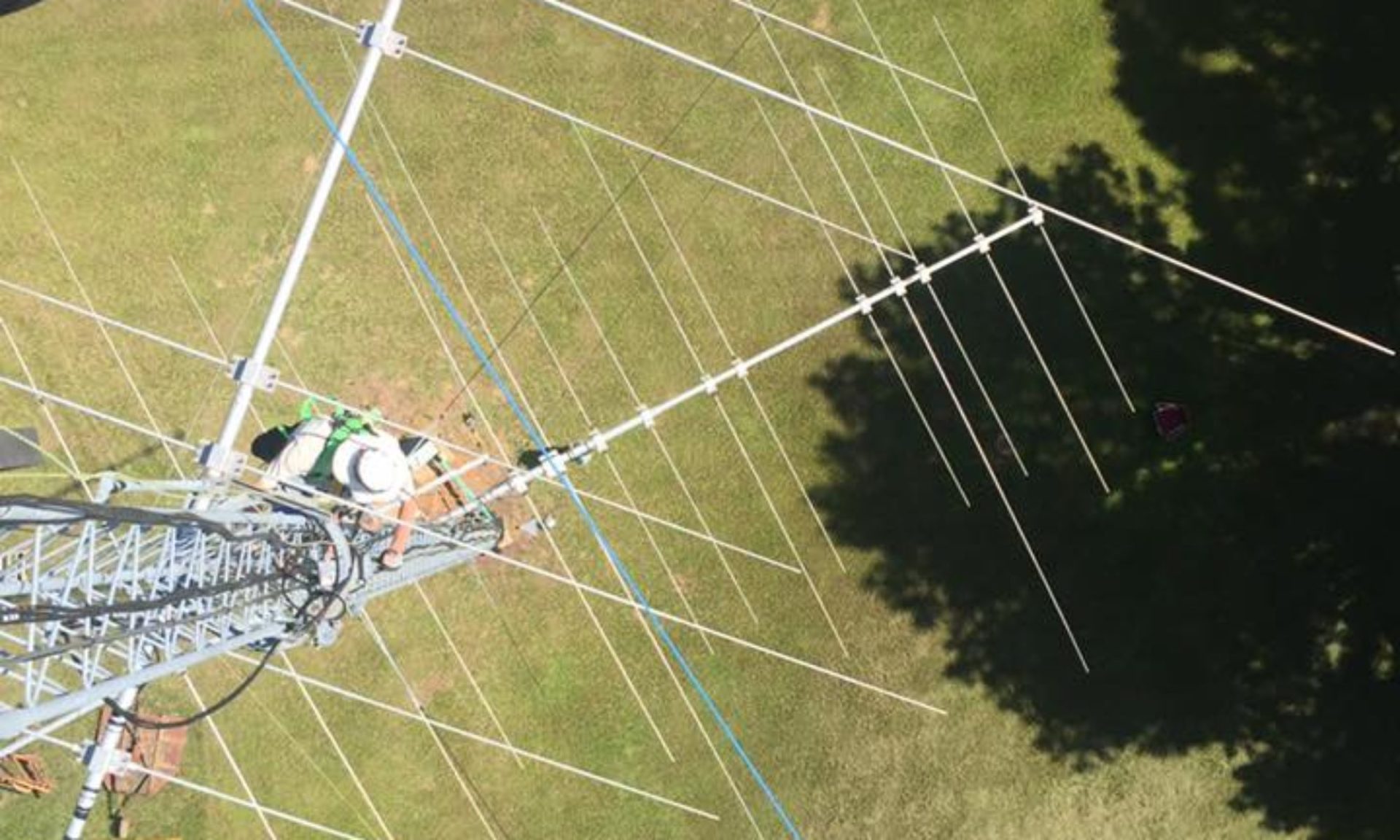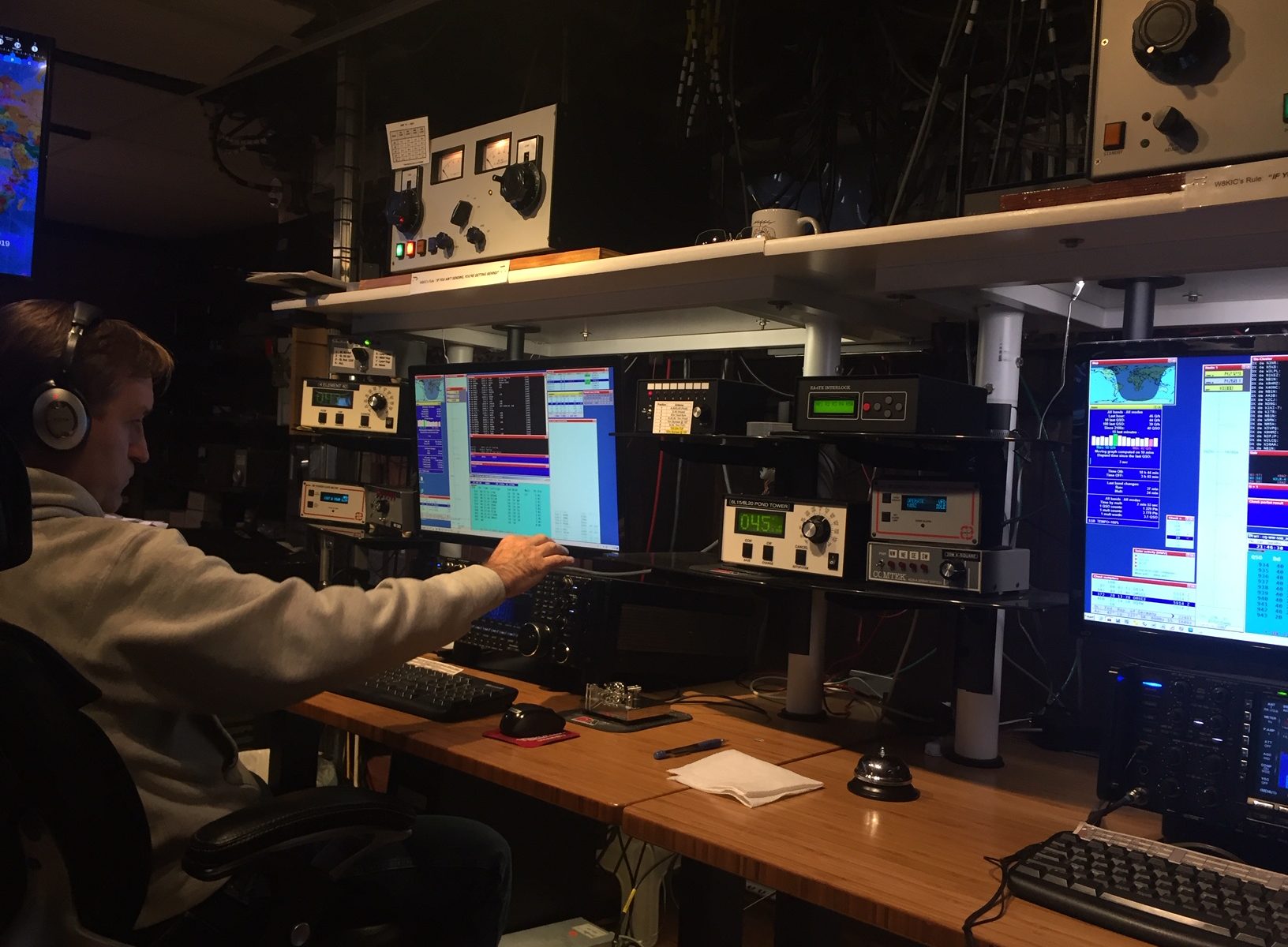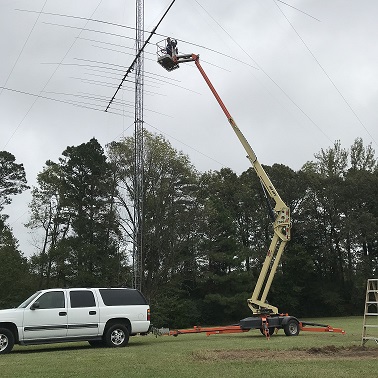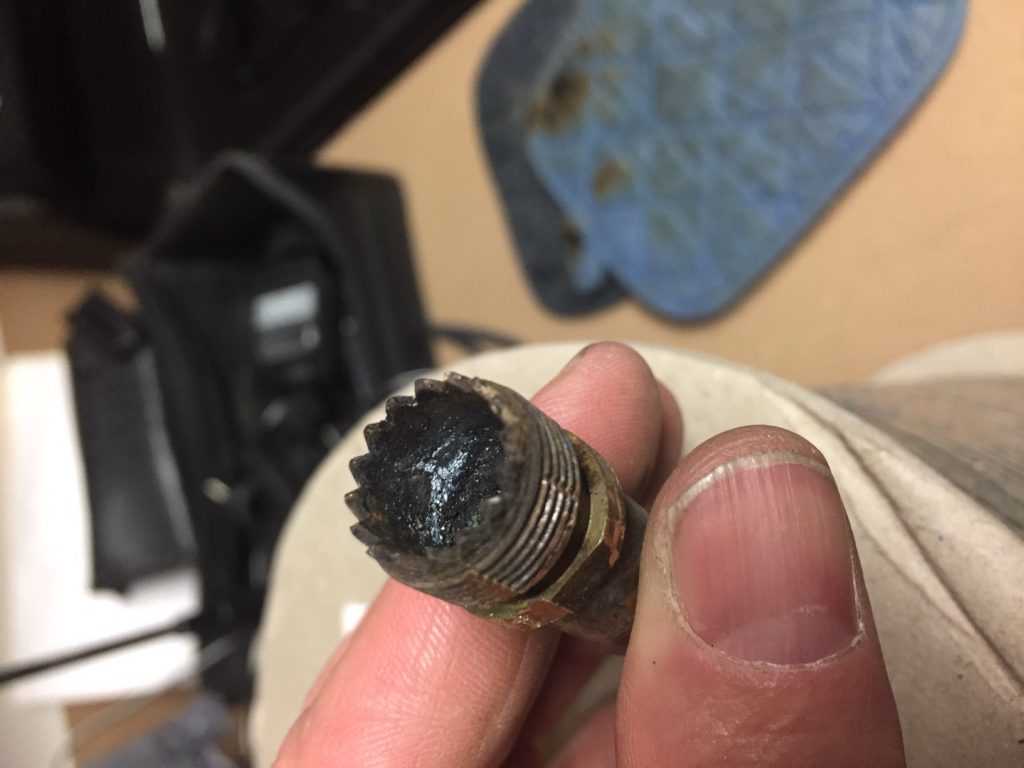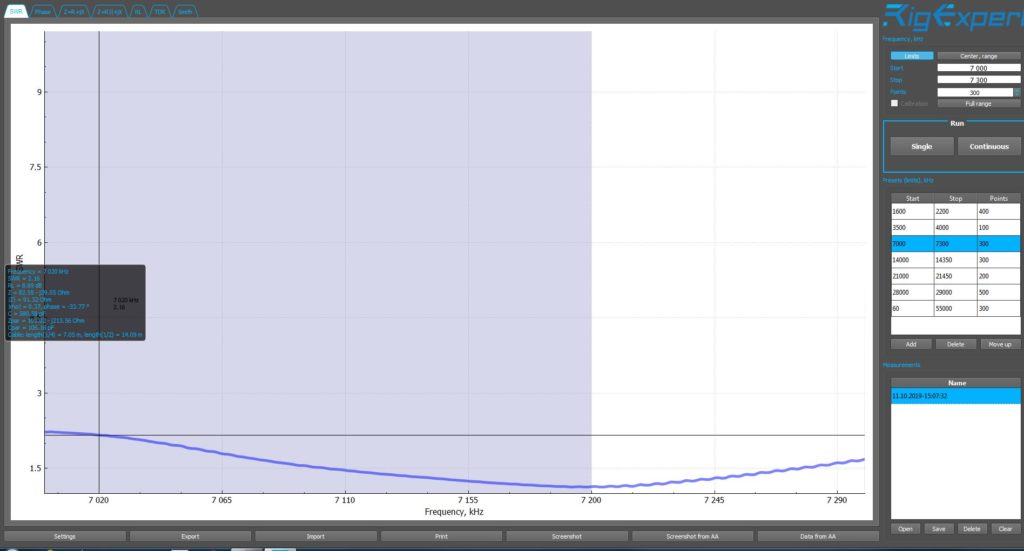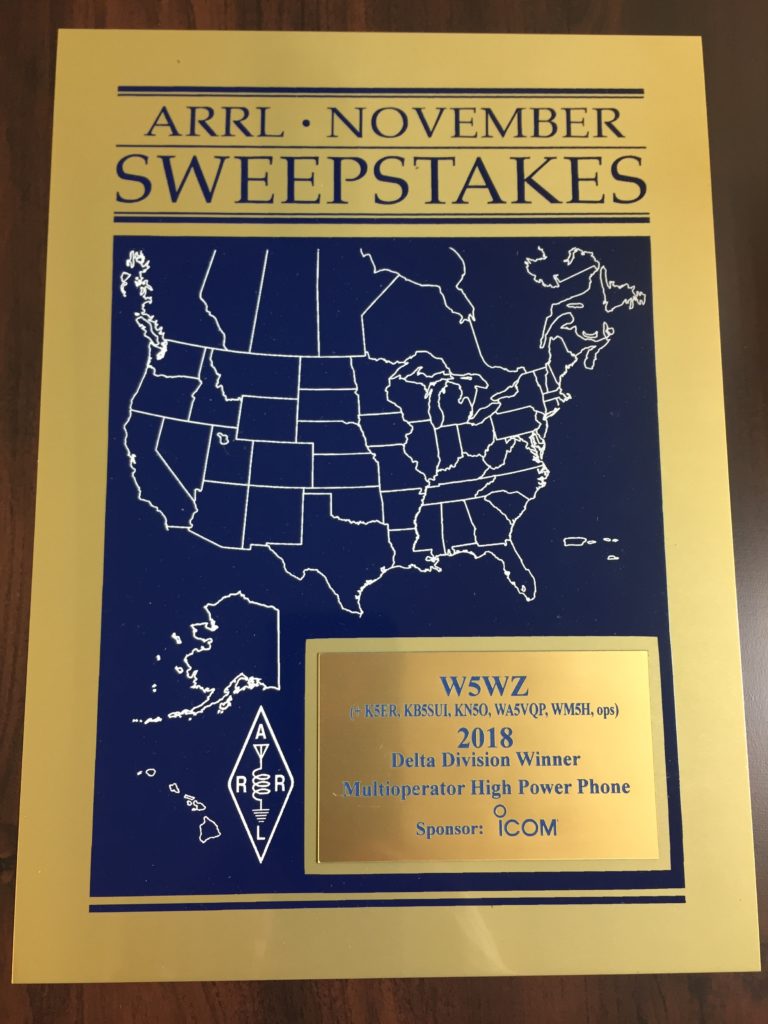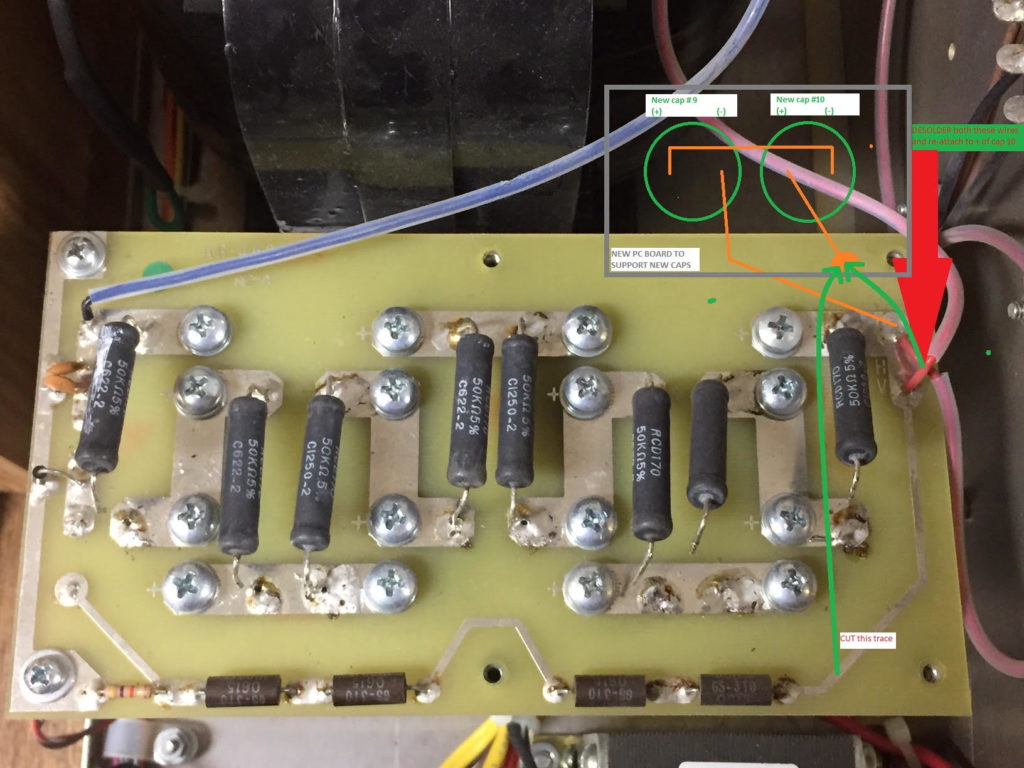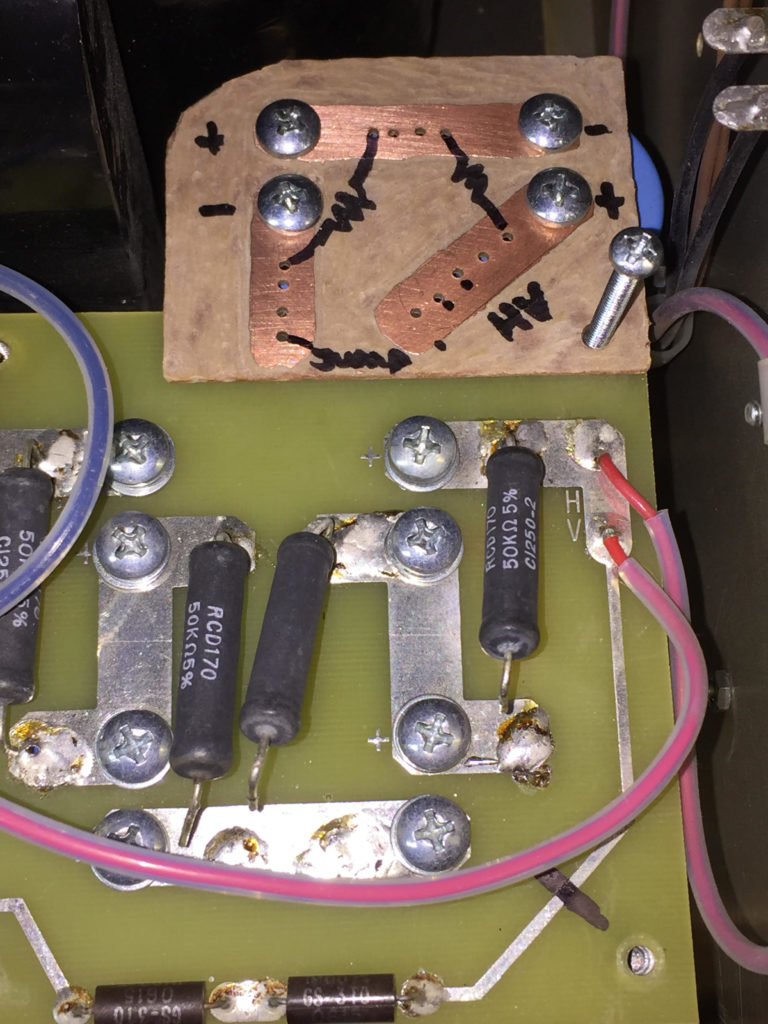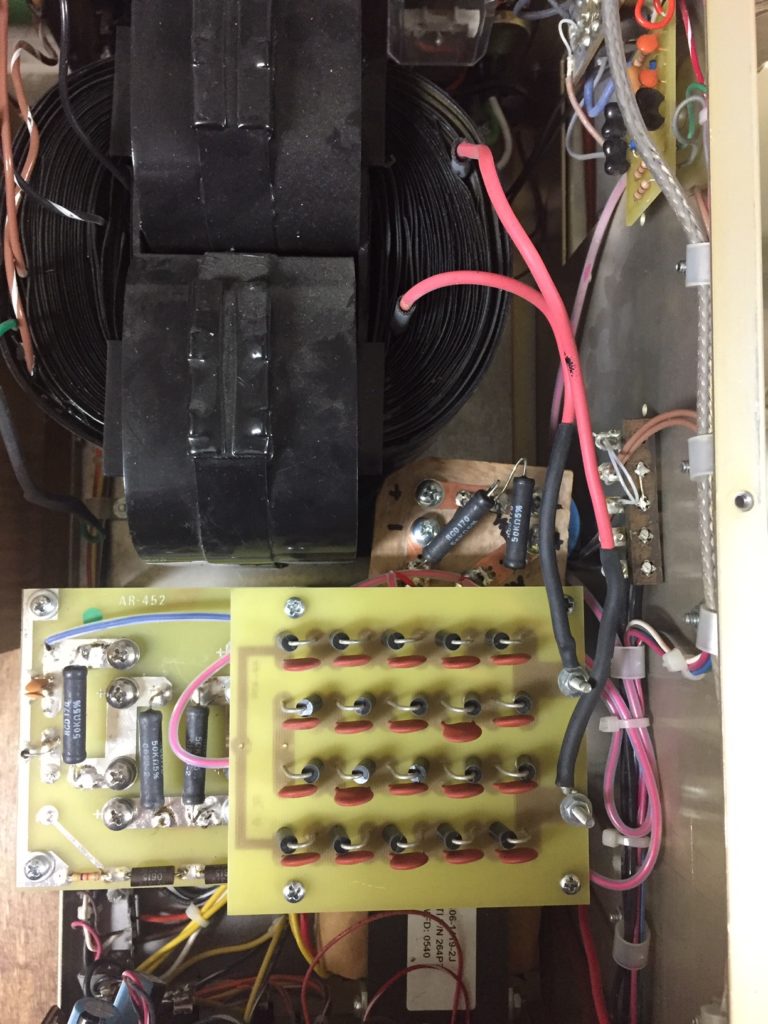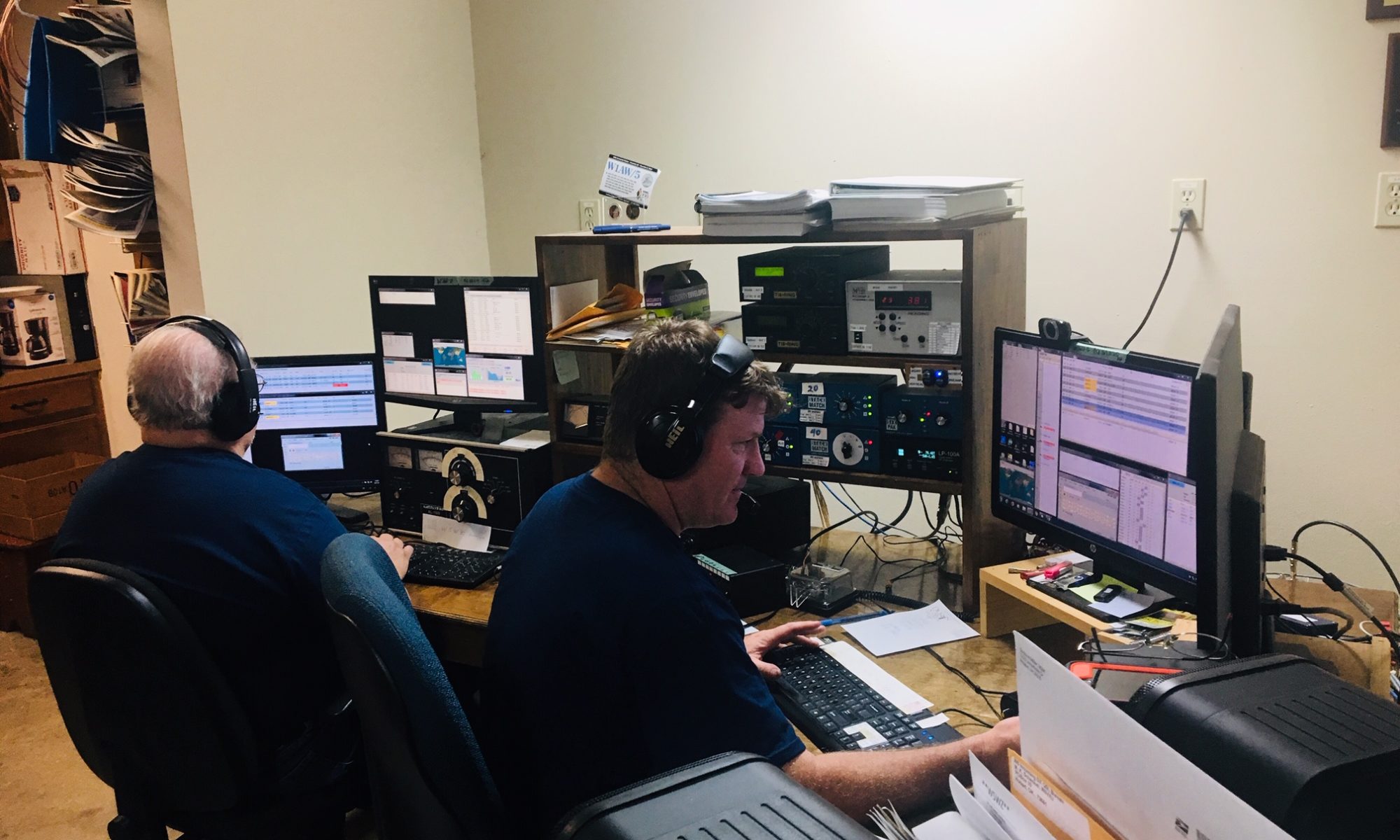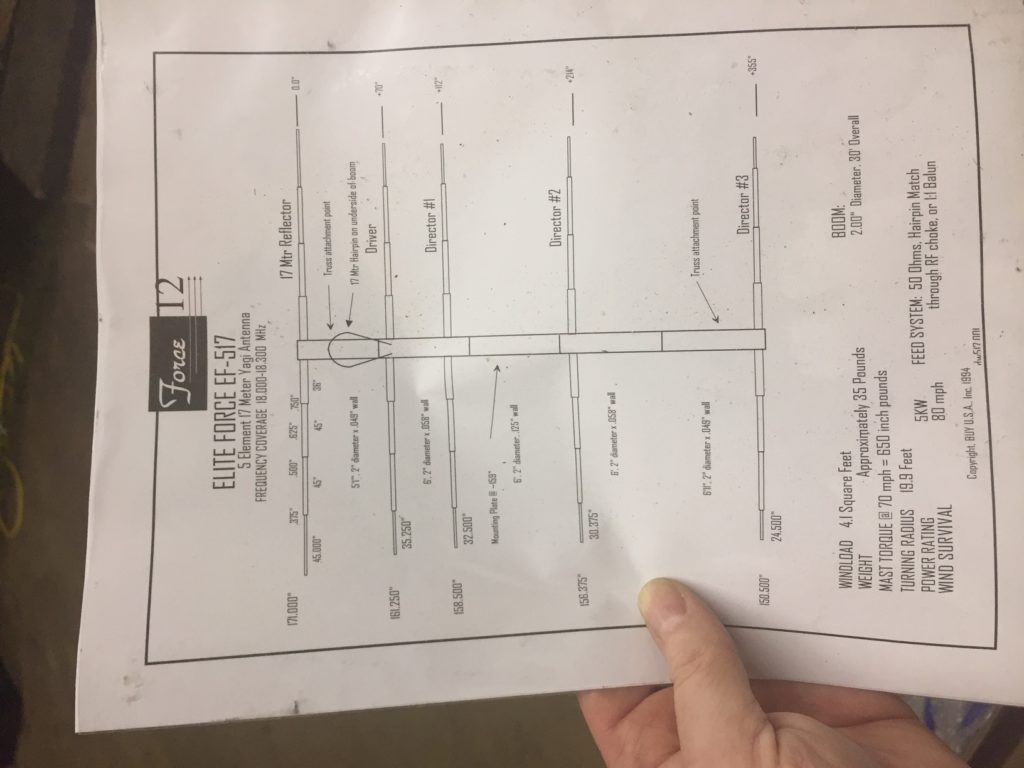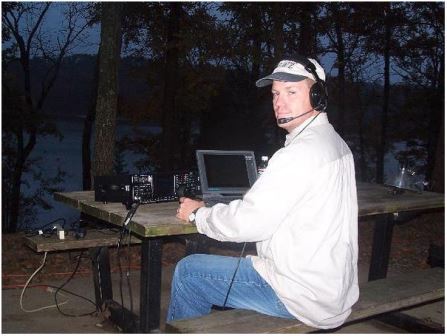I made my 7th trip to Chesterland, Ohio to the fantastic station of Tom, K8AZ for the 2019-CQ WW SSB contest. Yes, it is a long drive – 16 hours or so. But the camaraderie with the gang makes it all the better!
As usual, I spend some time on Friday helping Tom with various maintenance, repairs, or installations of new items. This trip was no exception. Many hands do indeed make light work!
Tom takes a pre-contest walk around the antenna farm. This time, we found the rope supporting the SW element of the 80-meter transmit 4-square had broken, and the result was a rope tangled up in the elements of several yagis on a rotating tower.
In waning day light, we worked to free the rope from the tower such that the 80-m antenna would be usable. The rotating tower is 15 and 20 meters, so we parked it toward Africa for the night. Once the rope was free, we managed to get it positioned such that the 80-m antenna functioned for the overnight operating period.
The next morning, it was raining. The forecast called for increasing winds throughout the day and into the night. K8AZ and I ventured with bow and arrow to get a string over the appropriate tree. First challenge was using a sling blade to clear walking paths and work areas in the raspberry thicket, then cross a creek to find the loose end of the rope. Second challenge was to place the string. First shot success! Then pulled a larger string, and at last the final rope. With the antenna repaired, back to the house for shower and then operating time again.
Near sunset on Sunday night, suddenly 80-meter 4-square SWR went really high. Upon inspection, we found the NE element had broken loose from the feed point. Hauled a ladder out and worked beyond sunset to complete the repair with 20 minutes left in the contest.
Highlights of this contest: seeing my friends K8AZ, K8NZ, W8CAR, WT8C, AA8OY, K8RR, W8WWV, K8BL; riding in and driving a dual motor Tesla Model 3; meeting KE3X and talking contest strategy; and working CN3A on 160m with my own call!
CQ Magazine included this blog post in their official post-contest writeup!
